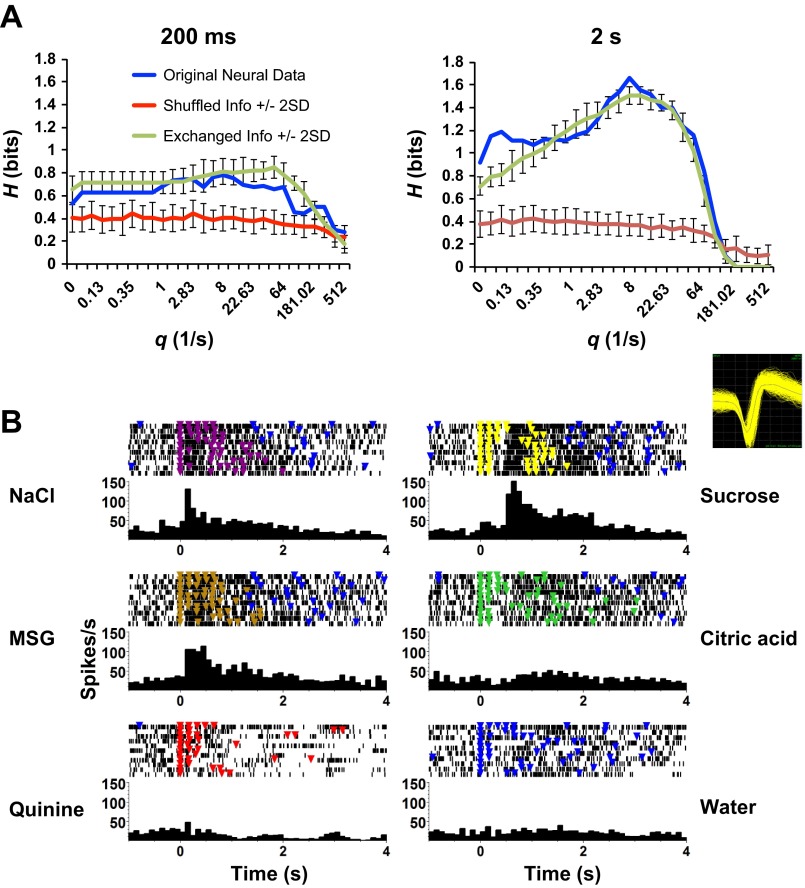Fig. 7.
Information-theoretic analysis of a single taste-responsive PbN cell. A: information (H) is shown as a function of temporal precision (q), for the first 200 ms (left) and first 2 s (right) of the response. At 200 ms, the information in the recorded responses (Hmax = 0.78 bits) exceeded the information in the shuffled (Hshuffle + 2SD = 0.63 bits) but not the exchange-resampled (Hexchange + 2SD = 1.05 bits) responses, indicating that the rate envelope conveys more information than spike count, but spike timing does not make a detectable contribution. At 2 s, the information in the recorded responses (Hmax = 1.66 bits) at qmax (q = 8) exceeds the information conveyed by both the shuffled (Hshuffle + 2SD = 0.54 bits) and exchange-resampled (Hexchange + 2SD = 1.50 bits) responses, indicating that spike timing contributes to the information carried about taste quality, in addition to the information carried by spike count and rate envelope. Blue, recorded responses; red, shuffled responses; green, exchange-resampled responses; error bars indicate ±2SD. B: rasters and PSTHs of the cell shown in A; format as in Fig. 3. This cell responded significantly to NaCl, sucrose, and MSG. Inset: extracellular waveform of the recorded cell.

